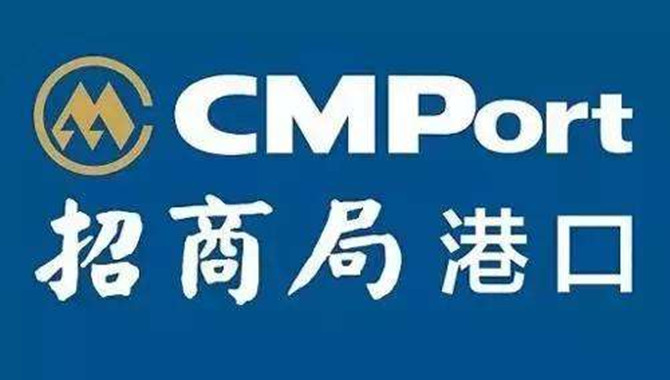
The Board of Directors of China Merchants Port Holdings Company Limited announced the unaudited consolidated results of the Company and its subsidiaries (the “Group”) for the year ended 31 December 2019.
Highlights of 2019 Annual results of the Group:
Container throughput volume rose by 2.4% year-on-year to 111.72 million TEUs (2018: 109.06 million TEUs);
Total bulk cargo volume handled 449 million tonnes (2018: 502 million tonnes), down by 10.5% year-on-year;
Profit attributable to equity holders of the Company totaled HK$8,362 million (2018: HK$7,245 million), up by 15.4% year-on-year;
Profit attributable to equity holders of the Company from ports operation totaled HK$9,721million (2018: HK$8,408 million), up by 15.6% year-on-year;
Basic earnings per share was 247.84 HK cents (2018: 219.54 HK cents), up by 12.9% year-on-year;
In 2019, the global economy sustained a moderate upward trend, yet growth momentum remained weak. The global economy and trade have been undermined by the uncertainties of the US-China trade frictions and geopolitical tensions. The growth of global ports throughput generally slowed down during 2019, and lower growth of throughput volume was recorded by ports in China. Confronted with the complex and changing external environment, the Group firmly adhered to the strategic principle of “leveraging on its long-term strategy, tapping the current edges, driving through technology and embracing changes” with a pragmatic attitude, the overall operating performance of the Group was satisfactory with the steady growth of the business. In 2019, the Group’s ports handled a total container throughput of 111.72 million TEUs, up by 2.4% over the previous year, and bulk cargo volume of 449 million tonnes, down by 10.5% over the previous year.
For the year ended 31 December 2019, the Group’s recorded revenue of HK$8,898 million, representing a decrease of 12.4% year-on-year, which was mainly attributed to the disposal of equity interest in China Merchants Port Group Co., Ltd. (formerly known as “Shenzhen Chiwan Wharf Holdings Limited” or “Shenzhen Chiwan”) in the previous year. Profit attributable to equity holders of the Company amounted to HK$8,362 million, representing a year-on-year increase of 15.4%, which included a gain of HK$3,281 million (net of tax) recognised from the Group’s disposal of land certain parcels at Qianhai during the year, while the amount for the previous year included a gain from the disposal of equity interest in Shenzhen Chiwan. Meanwhile, due to the decrease in share of profits of associates, the recurrent profit Note[1] decreased by 3.1% over the previous year to HK$4,163million.

Due to the disposal of equity interest of Shenzhen Chiwan in June 2018, container throughput in West Shenzhen decreased compared to the same period of last year. If the effect from Shenzhen Chiwan was taken off, the organic growth in West Shenzhen decreased by 0.1% year-on-year.
YRD and Bohai Rim were the major boosters to the growth of container business
In 2019, the Group’s ports handled a total container throughput of 111.72 million TEUs, up by 2.4% year-on-year, among which the Group’s ports in Mainland China handled a container throughput of 83.67 million TEUs, up by 3.6% year-on-year, which was mainly benefitted from the growth in container volume of the Group’s ports in the Yangtze River Delta region in China, as well as its participation in the merger of container terminals in Tianjin. The Group’s operations in Hong Kong and Taiwan handled an aggregate container throughput of 7.21 million TEUs, representing a decrease of 6.1% as compared with the previous year. A total container throughput handled by the Group’s overseas ports grew by 0.9% year-on-year to 20.84 million TEUs, among which Colombo International Container Terminals Limited (“CICT”) in Sri Lanka, TCP Participações S.A. (“TCP”) in Brazil and Lomé Container Terminal S.A. in Togo recorded rapid growth in their throughput volume.
Bulk cargo volume handled by the Group’s ports decreased by 10.5% year-on-year to 449 million tonnes, within which the Group’s bulk cargo business in Mainland China recorded a decrease of 10.9% year-on-year, which was mainly affected by the completion of the disposal of Shenzhen Chiwan, strategic adjustments of business structure of Shanghai International Port (Group) Co., Ltd., as well as China’s environmental protection policies. Nevertheless, the Group’s overseas bulk cargo volume outperformed with an increase of 26.1% year-on-year, the wheeled and bulk cargo business in Hambantota International Port Group (Private) Limited (“Hambantota Port”) progressed well, among which the bulk cargo volume had a significant increase from 0.18 million to 0.50 million tonnes over the year.
Continuous upgrade in homebase port and remarkable breakthrough in overseas investment
Regarding the development of homebase port, the Group continued to transform by benchmarking against the world-class standard, striving to build globally leading ports. At West Shenzhen homebase port, the Group persevered with enhancing the overall competitiveness through various measures. Various upgrading construction projects were advanced, such as channel dredging, berths upgrading and cranes heightening, to resolve the key historical bottleneck of channels’ navigation capacities and upgrade the hardware facilities and infrastructures. In the overseas homebase ports, the Group was committed to developing South Asia’s regional leading ports and regional hub for international shipping in Sri Lanka as well as establishing a South Asian port network centred on Sri Lanka.
As for overseas expansion, by seizing the opportunities arising from China’s significant Belt and Road Initiative and the international industries migration. During the year, based on identifying Southeast Asian and South Asian gateway ports as key investment targets, the Group actively pushed ahead the proposed investment project through Terminal Link SAS to acquire up to 10 quality terminals under CMA CGM SA in Southeast Asia, South Asia, Europe and Caribbean Sea, etc., and initial closing of 8 out of the 10 terminals took place on 26 March 2020, which will further complement the Group’s global port network and hence enhance its core competitiveness and influence.
Overseas parks were promoted steadily and the establishment of “CM ePort”
In respect of comprehensive development, the Group actively explored and promoted the “Port-Park-City” comprehensive development model and achieved staged progress. Djibouti International Free Trade Zone was officially put into operation in early 2019 and recorded solid growth in business volume with promising momentum for expansion. As at the year-end, 78 enterprises were registered in the zone. The Group has completed the revision on the overall planning for the future development of the Hambantota Port in Sri Lanka, the one-stop service centre for induction of business and investment officially commenced operation.
With regard to innovative development, the Group pushed forward the “digitalisation strategy” by formulating and implementing the informationisation plans with a clear focus on developing “digital CMPort”. Based on the application of “E-Port” of the West Shenzhen Port Zone, the Group further promoted the establishment of “CM ePort”, an e-commerce platform for port and shipping industry in its subsidiary terminals. Haixing Intelligent Port project and the automatic loading and unloading project at Zhanjiang Port’s bulk terminals to handle commodities were well underway. Moreover, the Group led 11 enterprises to initiate and establish the “5G Intelligent Port Innovation Laboratory”, and realised the first RTG remote control operation under 5G network at Mawan Container Terminal, which optimised and enhanced the informationisation level of its ports comprehensively.
Building green ports and upholding the belief in mutual benefits
The Group aims to build green ports, and has formulated rules and regulations to manage energy conservation and environmental protection, and strengthened assessment and management of environmental risks. The Group continued to develop and apply new energy-saving and environmentally-friendly technologies and products. New energy conservation technologies and products, such as “Shore-Powered Supply for Vessels (船舶岸基供电)” and “Substitution of Fuel-Powered Equipment with Electricity-Powered Equipment (油改电)”, continued to expand the scope of their applications.
Upholding the belief in mutual benefits, the Group has been actively engaged in infrastructure construction and social welfare at the place where the Group invested. In 2019, the Group launched “China Merchants Silk Road Hope Village” project in Sri Lanka. In the State of Paraná in Brazil where TCP is located, the Group sponsored the development and inheritance of the local Caesar culture by providing financial support and carrying out occupational and technical training for young Indians to help with their employment. At the same time, the Group continued to build the “Shaping Blue Dreams Together (C-Blue)” charity brand, the programme admitted a total of 44 outstanding young people from 13 countries along the Belt and Road in 2019, which not only provided a platform of learning and advancement, experience sharing and cultural exchange, but also made contribution to the Group and the global port and shipping industry with efforts in talent development.
Endeavour to maintain a steady development of port business in 2020
In 2020, the global economy will experience fragile recovery and probably will encounter unfavourable factors including trade tension and uncertainties of trade policies, and be hit by the novel coronavirus pneumonia epidemic. Nonetheless, the growth in emerging markets and developing economies will accelerate, while the consumption of the developing countries will continue to drive economic growth. Industry consolidation will create opportunities, and the industry development will undergo a transformation through digitalisation and technological innovation. The Group will utilise the balanced port investment network in different regions in China and overseas and endeavour to maintain a steady development of port business in 2020.
Amidst this complicated and changing external environment, the Group will embrace challenges, grasp opportunities, and explore potentials during the process of transformation and innovation, so as to open up new prospects with a proactive attitude. The Group will further enhance the endogenous power for corporate development, striving to create better returns for its shareholders.







